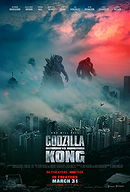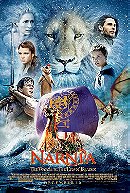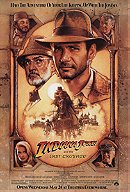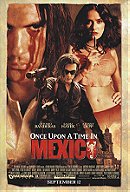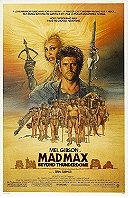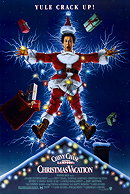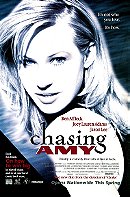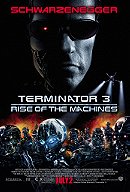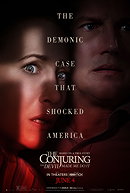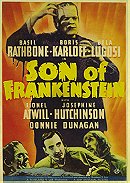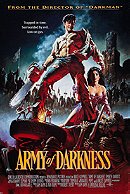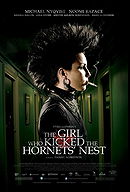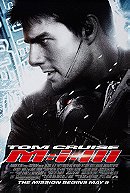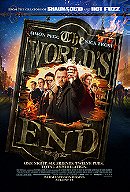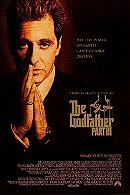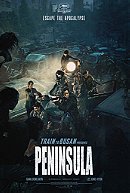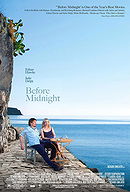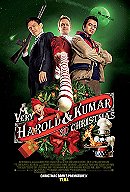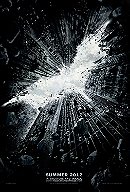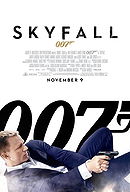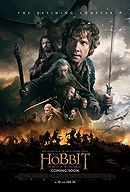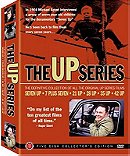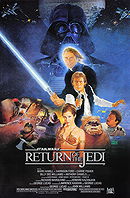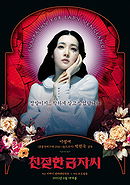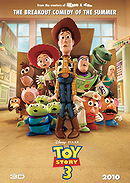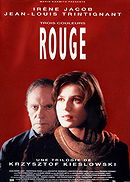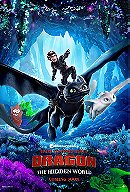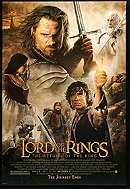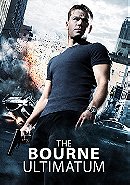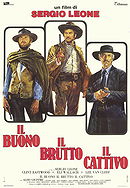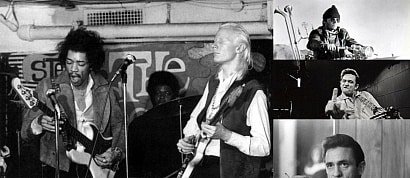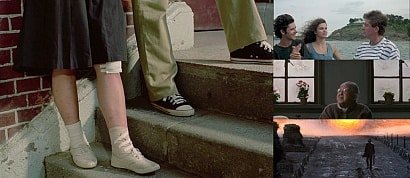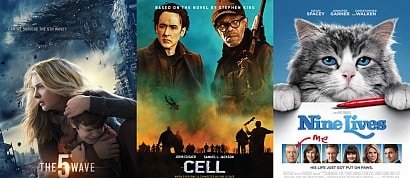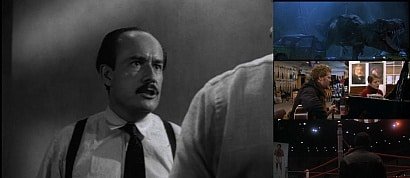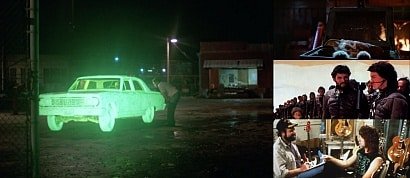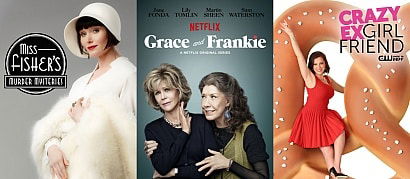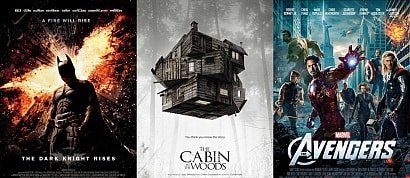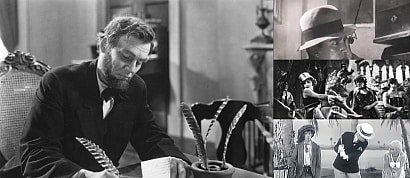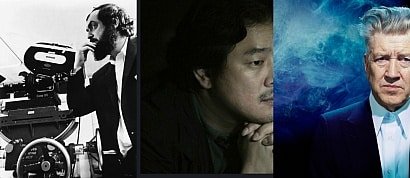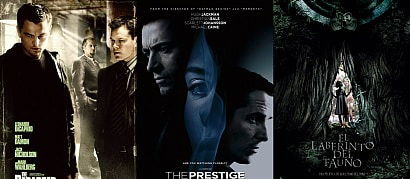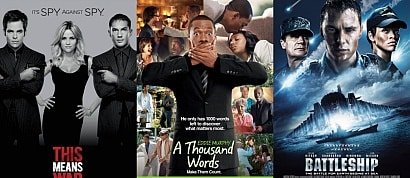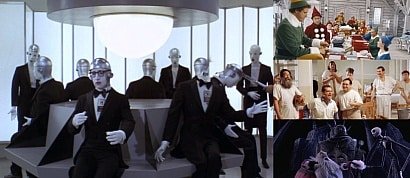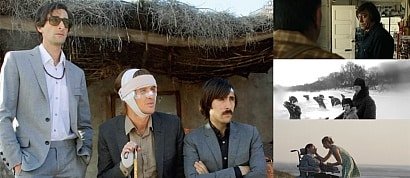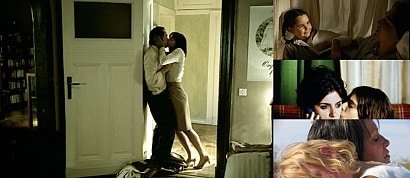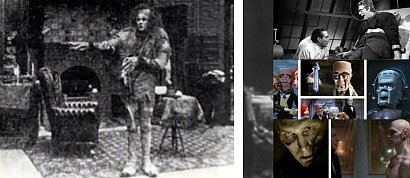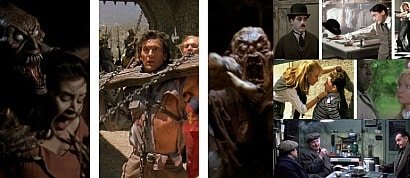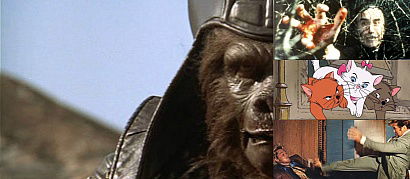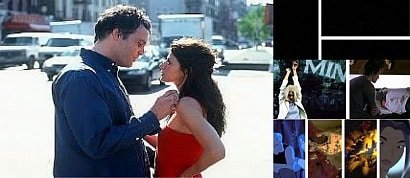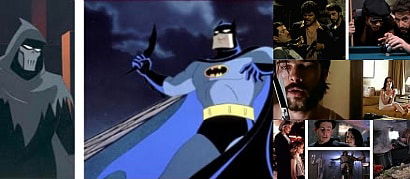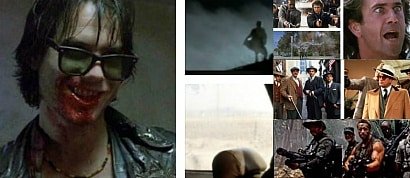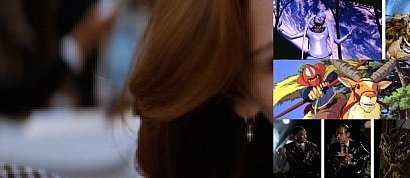My Favorite Threequels and/or 3rd Chapter Movies
But instead, he ends up getting a wardrobe malfunction in the form of a venomous life-form from the stars.
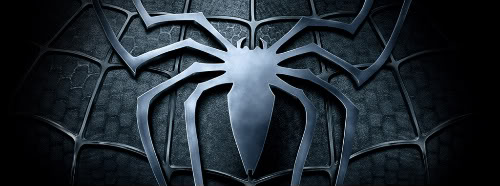
Spider-Man 3 is yet another one of those movies that tends to get a lot of knocks from critics and fans alike, but not enough to dissuade my fat comic-book nerdy ass from liking it (although, I will admit that I'm fully aware of its flaws and I do feel that Spidey 3 does not match the quality of Sam Raimi's two previous webslinging efforts).

When it comes to giant monster cinema, it's a pretty well accepted notion that the star of that subgenre is going to be Godzilla. While King Kong will always come in at a close second, the truth is, Godzilla is the most well-known around the globe when the subject of behemoth beasties comes up. And being that they are the two most famous of all oversized cryptid creatures in the motion picture industry, it was inevitable that the two would eventually meet. In 1962, the stars required to make such an epic event occur weren't completely aligned yet, but they were close enough that the kaiju krank machine known as Toho Studios decided to take a crack at it. Released under the straight in-your-face moniker of King Kong Versus Godzilla, it was a meeting of the monsters that wasn't exactly as climatic as fans would have desired but were willing to excuse considering the limitations of cinema effects at the time, and the even more limited aesthetics of the daikaiju genre.
It wasn't until six decades later, when all the necessary celestial bodies were lined up perfectly that the movers and shakers of the motion picture industry were finally able to conjure a visual feast of city-leveling, bombastic monster fisticuffs that would appeal not just to the hardcore fans, but also to the more domesticated viewing pleasures of mainstream audiences.
Of course, the script in this picture still lacks the vison of those who can see the kind of story ideas that can make anyone suspend their sense of disbelief enough to not wince during any of the human-to-human dialogue scenes. But the computer-generated visuals are at the level of the best that current technology can provide, thus resulting in the kind of dynamic debris-flying destruction that will make the eyeballs of even the most indifferent non-fan "reel" to the back of their head.
And, at the end of the day, that's what this third installment into Legendary Pictures' MonsterVerse delivers,
In city block sized spades.

But after all of the success that came from the second Star Trek movie, there was no way in a Klingon's dark star quadrant that this franchise's producers were going to let the Enterprise's commander and Captain Kirk's confidant stay dead for too long. And to make sure that the movie fans who flocked to the theaters for the second feature would do the same for a third film, they made that these Trekkies understood that death was only a temporary infliction for their favorite Vulcan, they put their intent right there in the film's title. Search For Spock made it clear that in some way that could only be explained through the science of the 23rd Century, Kirk and his crew were going to find some miraculous way to bring Spock back. Even if it meant traveling where no man has gone before.
Which is pretty much par for the course for these guys anyways and set the tone for the rest of the 80's decade that Trek was a star faring franchise that was going to try and compete with the cultural phenomenon that the Star Wars movies had become.

However, Dawn-Treader had some redeemable moments that allowed me to endure the bits that bothered me.
One of those moments was, of course the really cool giant Sea Serpent segment.
From what I understand, it was much more fearsome than the source material. I don't know how or if that may have translated to the sensibilities of the hardcore fans, but for me, I just thought it was pure kick-ass.

Because even though Connery is good here and has the kind of patriarchal Jones vibe going here, and that the script was pretty solid in that typical Indiana way, at the end of the day, it's the action sequences were the always the highlights of this franchise, and for me, in this one, they were all done by the numbers based on the first two. They weren't as exciting for me because I had already seen them done in almost the exact manner as in the first two flicks. I remember being very excited in the local cineplex in my town when Crusade was about to begin, but then, whenever any of the action sequences began, just sitting bored because I instantly recognized them as being copies of what was shown in Raiders of the Lost Ark, but just in a different setting.
Yeah, the storyline of Dr. Jones' father did add an extra dimension to the character's premise, especially when portrayed by Sean's ever reliable camera presence. But I just felt the end result was very much lacking from Raiders and Temple of Doom were able to accomplish when it came to establishing the series as a bar-raising action-adventure serial franchise.
Don't get me wrong, there was enough in Indy's Last Crusade to qualify a spot on this list of third time is the charm sequels list, but that doesn't take away the fact that, overall, it is still a few steps down from Dr. Jones' previous attempts at fame and glory.

Absolutely nothing.

And speaking about nothing, it took me a while to get why this particular "Once Upon Time" production had a certain feeling of awkwardness, and eventually it finally hit me.... there really isn't all that much to the plot of this "In Mexico" other than it's just a buncha good-looking people doing a whole buncha really bad-ass things, that on the surface level, it feels like there something going in all of it, wherein, upon closer inspection, it becomes obvious that there isn't. Which, around the time of this movie, is when I first noticed that this a typical habit of most Robert Rodriguez's work.
Written and directed by this then young Mexican up'n'comer, the franchise started with El Mariachi, a super low budget indie endeavor that ended up becoming one of those rare big surprise hits that often tends to raise the status of its director to the level of "exciting new talent". Now backed with the kind of budget that big major studios can afford to pay, RR followed up Mariachi by placing the titular character in second film that came off more as a reworking of the first story than it did a sequel. To be quite honest, it isn't very clear which one of those two it's supposed to be. But it was a good movie, and it was enough of a financial success to warrant a third chapter to Spanish speaking guitar hero.
Which, of course is this one. OUoaTiM, again, featuring El Mariachi, played by Antonio Banderas and surrounded with a pretty well-rounded all-star cast (Johnny Depp, Enrique Iglesias, Cheech Marin, Salma Hayek, Eva Mendes, Mickey Rourke, and the mightiest of all the Mexi-Cans, Danny Trejo). Now, when I mentioned that this group of characters don't add up to too much of a story, I know that that isn't much of a positive to help promote this third chapter of the series. But that doesn't mean that this isn't an enjoyable piece of cinema. From my perspective, the stylish manner in which the characters are presented here and, in the way that all of the kinetically structured action moves forward, along with its connection to the El Mariachi Trilogy, on the surface level it does sometimes come off as if there was more to the story than first meets the eye. But with busy-ness in which all the various elements unfolded, it sorta feels like all the empty space get filled up by the process of the viewer simply viewing it. I don't know if that makes any kind of sense, but I'll put this way, for me, the illusion that something is going on was enough for me to enjoy Once Upon a Time In Mexico as a solid, entertaining thrill-ride from just came shooting out on all cylinders from just south of the border.
Therefore, when I walked out of Mad Max Beyond Thunderdome, I didn't think it was the worst thing I had ever seen, but I definitely felt as though it didn't come anywhere near in meeting my expectations. In this installment, our dystopian wanderer stumbles into the lost community of Bartertown, one of the few surviving pockets of civilization struggling to continue to exist in the post-apocalyptic wastelands that makes up this particular cinematic universe. As in the last film, the inhabitants of the town are very distrustful of anyone who comes from outside their borders, and with his trademark stoic anti-social nature, Max soon finds himself thrown into the caged arena of the Thunderdome, a makeshift gladiatorial arena where "two men enter, only one comes out". Squaring off against the symbiotic might of the "two-pronged" Master-Blaster, a bungee inspired battle begins in which the results will not only determine who lives, but also, who is the true master of Bartertown.

Is it a very creative after-Armageddon science-fiction action epic, and one of the best movies of 1985, but for me at the time, I still felt a sense of disappointment that it wasn't anywhere the stature of The Road Warrior.
Luckily, the passage of time has been able to dilute that disappointment, and as the years passed, I slowly began to put my expectations into perspective, and now I can watch Thunderdome with a much more objective set of eyes. And what I see now is a film that should be judge on its own merits. One that features a new batch of distinctive Dystopian characters, including Aunty Entity, played superbly by one of the diva queens of that decade, Mz. Tina Turner (how this didn't start up a long career as an actress is beyond me).
It still doesn't, and probably never will be able to, compete against the greatness that I hold for Road Warrior, but it is still a very well written and amazingly produced film of sand-filled futuristic fantasy that may try to tell us that we don't need another hero, but it's nice to see that we still got one anyways.
Yuletide holiday merriment and cheer from back during a period when Chevy Chase was considered to be cooler than Santa Clause. Not to mention, this was also a time when he was actually, believe it or not, kinda funny.

And not with just a "regular" chick, but more specifically,
he scores with a chick who is a lesbian.
And this comicbook nerd/artist not only scores with a lesbian,
but he scores enough with her to the point where she decides to switch teams.
Yeah.....
rright.

I'm not usually a fan of putting movies like Chasing Amy in the category of being a sequel since, as a story that only really exists in the same universe of another movie, and therefore the story isn't really a continuation of what heppened before. But I'm doing it here because as someone who started out as a big fan of Kevin Smith's early movies and seen his talents slowly slide down to the point of cranking some real stinkers, this is one the few moments I'll be able to post up a work of his back when his writing and directing abilities were still pretty good.
Next thing you know, you have an unfeeling female automation stalking. Particularly, one who seems to possess a will to terminate you with a tenacity that's so relentless, you'd almost swear she was an ex-girlfriend or somethin' (...that is, a girlfriend who was impervious to restraining orders).

Personally speaking, I sometimes feel torn about my feelings for T-3. Of course, everyone knows that the machines in this installment don't rise anywhere near the level of the first two films. However, that doesn't mean that this isn't a good movie. The truth is, it is. It's a solid summertime type of science fiction action blockbuster that delivers all the goods that are expected from a typical summer blockbuster.
The problem lies in that the two films that preceded this one were not typical. They were groundbreakers and were able to rise way above the level of what we could expect from a motion picture that featured time travel, robots and lots of really cool car chases.
As ai that weren't enough, Terminator 2: Judgment Day is about as close to an action thriller that one could get. Not just because the actions were so incredibly awesome, but also, the story fits in as good as one can within the context of the premise. This all has the result of the ending of T2 is where this story of the Terminators should have ended. As good as T3:RotM is, there really was need for it. I mean, y;know, other than financial reasons. The story that itself didn't need any more continuation; it was perfect where it was. But the movie company responsible for the franchise couldn't leave well enough alone, they just had to see if they could find some way to squeeze some more box office out this franchise. And it's shows.
That is where the conflict of this whole series occurs.
The series is a classic based simply on the first two films. It didn't need this third one. But at the same time, Rise of the Machines, despite being completely unnecessary, still does manage to hold its own as a stand-alone sci-fi action flick. Sure, it can exist by itself, but as part of the overall franchise, it becomes a gateway to a whole new set of movies that just continue to act as one disappointment after another.
It's the whole Creativity Vs Commerce argument.
All I can say from here on end is, that for me myself, I look at the Saga of Sara Connor as a two-parter that consists of Terminators I and II. And in order to continue to enjoy the franchise as one my favorites of all time, I have to choose to end the saga there. But every once in a blue moon, I will watch this third installment and enjoy it as a solid action thriller that it is, but only if I make the effort to tell my brain to disassociate it with the first two chapters and look at it as a totally separate story.
"Ah'll be bock." is a catchphrase that, IMO, only works when James Cameron is guy behind the camera telling the story. As soon anyone comes in to take charge, then from there on, all you're gonna get from me is an "Hasta la vista, baby!".
Now obviously, we all know that moviemakers had to take quite a number of liberties with the details in the stories of the demon defying duo in order to present them as entertaining scare-fare for mainstream audiences, especially since they were making a "hell" of alotta money at the box office. Still, to keep on trying to present one "real" case after another on the big screen, after a while it's going to require stretching the creative licensing a bit, beyond what is believable, even to those who "believe" in the paranormal activities of people like the Warrens. Therefore, while The Devil Made Me Do It doesn't "possess" the macabre momentum of the first two films, the producers did inject enough "pea soup" into it to finish it off as probably one of the better horror themed franchises that Hollywood as been able to copiously spit out into the faces of horror fans who like this kind of stuff.


Featuring not only the first appearance of the iconic hunchbacked sidekick named Ygor (notice that's the correct spelling is a "Y", not an "I"), but also some really cool angular backdrops, a one-armed inspector, and a laboratory containing a big pit of sulfur.
And lemme tell you something,
when it comes to literal foreshadowing, they don't get any deeper than a big pit of sulfur.

I personally had an aversion to most schlock type of horror films and so I never could "connect" to these kinds of campy carnal carnivals of chaos. It's because of this that despite Night of the Living Dead being my favorite zombie flick of all time, I never really liked any the schlocky stuff that Goerge Romero produced afterwards. Despite ED having its fair share of gloppy schlock being slopped throughout its running span, at least, I liked their set-ups and the fun energy that splattered about from the overly obvious practical effects more than what their "walking" counterparts were oozing out. And as a result of this, I was able to return to 'these drippy Dead flicks every once in a blue moon for a rewatch or two.

In this final installment of the original film series, the lead character returns just in time to go back in time and kick some Ash. The genre shambles its way from horror into fantasy adventure as the story shifts from the modern day setting of the isolated woods to the backdrop of the Arthurian landscape of the Middle Ages. Luckily, Ash is able to take favorite weapon of choice, his trusty chainsaw with him on this trip into the past. Now, I don't know if they had the kind of gas that is required to power a Homelite XL-12 (that's the specific type of saw Ash wields as a replacement for his hand) but, again luckily, when you take a chainsaw back to medieval times, it's just as effective as a sword when it comes to slicing and dicing through the decaying flesh and skeletal limbs of a multitude of minions of moldered evil. How effective it is a product placement in a franchise like this, that's a whole 'nother question for a whole 'nother discussion (on a whole 'nother site...).
A trio of tales that follows the trail of a leather studded social misfit gifted with an exceptional talent as a computer hacker and the relationship that she forms with an investigative journalist who is much older than she is. Now, I'll admit with the overall general consensus that the quality may slip a little as the series progresses, but contrary to popular belief, I thank that when one considers that each movie was made one right after the other (and released all in the same year), in the end, each chapter in this trilogy is still a high quality, provocative story and in my personal opinion, each one stands well out on its own as a satisfactory, self-contained feature film.

Also, because, from what I've heard, since I never read any of the books, this final chapter in the saga of Katniss Evergreen's revolution is the weakest of the series.
So, even though this film is a notch down from what we've seen so far, it's still enough of a grand epic that fits the mold of what we expect from these kinds of big budget blockbusting franchises.

Of the "original trilogy", it's the third chapter that has the strongest storyline to it, not to mention probably the best villain of the whole franchise so far (including the newer ones), Philip Seymore Hoffman turns up the cold-churning evil as the dastardly mastermind of menace known as Owen Davian.
It seemed like the movie company responsible for the M:I movies had planned on number 3 being the last of the series, but with the resurgence of the blockbuster franchise throughout the 2000's, it was only a matter of time before Mission began accepting more assignments.
Which turned out to be a good thing when one looks at the way the quality of the stories kept getting better. Not to mention, that the characters were being updated with more dimension to their personalities that we had seen before. Of course, the missions themselves were gonna get a bit ludicrous and the explosions were gonna get a bit more bigger (heck, on of the later ones had a nuclear sized explosion in it!), but let's be honest, by the time of M:I 3, with the breakneck speed of the high-quality action showing no signs of slowing down, when it comes to these missions, it's that kind of over-the-top impossibility that we crave.

The third in trilogy of animated shorts (after this, the dynamic stop-motion duo move up into the big times with full length movies), the man and his "best friend" clumsily come across an illegal sheep rustling scheme and find out that it's quite the dog-eat-dog business.


The closing chapter to the Simon Pegg and Nick Frost's Three Flavours Cornetto trilogy (although, to be quite honest, at first, I thought that the 2011 sci-fi flick Paul was the final story since it also features the Pegg & Frost coupling and also because Paul fits perfectly with the theme comedic homage to various movie genres that seems to be the whole purpose of the trilogy).
And to be quite honest,
when I first heard that this was the name given to this three-film set, my first thought was "What the hell is a 'cornetto?'".
So, utilizing the power at my fingertips, I googled it.
Turns out that cornetto is either a 16th century woodwind instrument or a brand of ice cream.
To which, with the bullet quick speed of my wit, I instantly realized that it was probably being used in reference to the ice cream in this particular instance.
So as a result, because of these movies,
if the world were to end right now, not only would I die a little bit smarter,
but also, I'd die with a cravenous desire for a frozen treat.
And, IMO, on it's own, it's a very good mobster movie. Obviously, it can't compare to the first two, but in the genre of mob-flicks, it kicks it's own particuler brand of mafia ass.
Plus, with it's redemption-themed, politically-charged corporation/Vatican storyline,
it's a pretty goddamn smart movie, too.
Now while I know that I will always be in the minutest of the minority in regards to this film, I don't care, I still like it, b#tchez. And I still find watching the whole series as a trilogy to be quite a fulfilling movie-viewing experience.
Now, if only Sofia Coppola would've gotten shot at the beginning of the film instead of the end, maybe this film would get a little bit more respect.

If there was a way to describe the first Busan movie in theatrical terms, I guess whe say that it's basically Runaway Train meets World War Z. In that regard, we could probaby then describe this fast-fiend follow-up as The Fast and the Furious meets World War Z ... with a nod to Mad Max Beyond Thunderdome ....and another nod to the Road Warrior ... and maybe a slight hint towards Raiders of the Lost Ark.
Basically, it's a series whose major premise is to hve different types of fast moving vehicles smash into World War Z types of carcass-accumulated pile-ups. And just like it's predecessor, Peninsula does a good job of delivering it's goods while at the same time, stitching it's undead body count action scenes with the type of talking head scenes that build a story that actually comes to life in the midst of all the macabre and mercurial moving mayhem.
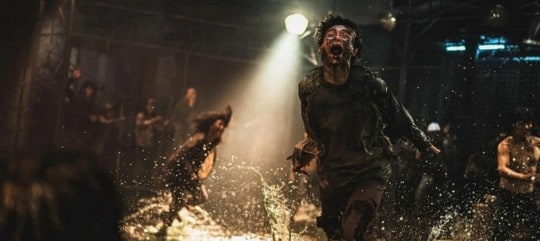
When Richard Linklater first "burst" onto the independent film scene in 1990 with Slacker, many critics predicted that he was going to bring many good things into the world of alternative movie viewing. And he did. But one area that he took me by surprise with his unique ability to write deep introspective and most importantly, non-formula storytelling, was in the area of the romance picture.
In the first two movies in this "Before Trilogy" two very smart, very deep and very chatty young people from different sides of the Atlantic meet and fall in love by, well... actually talking to each other. Something that we rarely see when compared to the typical cookie cutter formula that we're used to seeing being continually cranked out of La-La Land. After their initial encounter and then a several years long bump in their relationship, Before Midnight updates us on the couple's status, who are now married to each other and with children. And just like every other committed relationship that have embarked on the long journey of familyhood, they must deal with the challenges that arise from such a life spanning situation.
As is the signature of any Linklater production, the main characters of BM spend the majority of the story talking through their feelings, check marking observations and confronting their always present insecurities. And in the process, discovering that no matter how long or how deep their time spent together may be, there are always new things, deeper aspects to their individual personalities, to bare and then to learn about, from each other. And those aspects might not always be pretty or reassuring, but at the end of it all, those are things that they will always share.
....and, as the tradition of this series demands, that one Doogie Howser guy makes an appearance, in a role in which he plays himself and pokes fun on the subject of him being gay.
....in which, as a character in the movie, he's not.
But which, in actuality, he is.
B'cuz this is, after all, just a movie.



As a non-fan of the fictional MI6 series, I was pretty amazed with the first reboot film starring Daniel Craig. The action was frenetically kick-ass, the storyline bought a sense of reality to the usually outlandish villainous shenanigans and the character development added a 3rd dimension to a character whom I always found two dimensional.
Therefore I was hoping that the following films would continue the trend. However, Quantum of Solace, while it's heart was in the right place, it's sloppy direction slowed down the momentum started in Casino Royale.
Skyfall on the other hand, while not in the same league as Casino, proved to be the project that should've followed the first.
I'd still like to see the plots of this franchise reboot to match the grandness of it's villainous schemes, but with the level of quality being pumped into all other aspects of this secret agents world saving assignments, Bond's future seems like one that will be not so much shaken as it would be stirred.
Plus, I got to admit,
as someone who never read the books, it was kind of refreshing to know what was going on (as opposed to the Lord of The Rings, where even though I enjoyed the hell out of all the epic battles and grand visuals, the cramp heaviness and rushed story development made it difficult to keep track of how everything was developing).

Therefore, there's an updated installment released after the seventh year of the previous film, each titled after the age of the subjects involved in this long-running project.
By the time of 1977, they're up to the age of 21.

Personally, I found it almost spooky and universally telling on the kind of perspective that arises from being a spectator of some else's life other than my own.
After every incarnation of this series, I can't help but ask those deep kinds of questions that are much easier to ask from the outside looking in.
For example, taking the film segments of the various people of this project when they were just children and watching 'em up against the segments of them as adults, I found myself genuinely wondering at what point in life do most of us, as humans, lose the zest and free-spiritedness that naturally comes with being a child, and then have it replaced by the more restrained walking representative of a crushed spirit that we have as adults?
And I can't remember when was the last time any film had the ability to make me get that introspective.

It's father vs. son vs. the Emperor as the first franchise to go under the simple term of "The Trilogy" by its fans reaches its long-awaited climax. Luke has become a full Jedi, Han has become decarbonized, and Princess Leia is completely ignoring the fact that she made out with her brother in the first episode, A Brave New Hope.
Yeah, I know that this is considered the weakest of the original series, but at the time of it's initial release, for me, there was was nothing more important than the Force Fever that was sweeping all of society back then.
I don't care that the Ewoks were corny, stupid and had a hit song at the time (if anyone out there has the 12-inch extended dance mix to this, contact me and you will have a new very best friend ... ),
for my sci-fi geeked-out @ss, this sh#t wuz fo sho', yo.
And besides, no matter how much ROTJ gets the stigma as the lesser of the groundbreaking blockbuster franchise trio , it still kicks the butt of any of the prequels (yeah, that's right.... I sed it).
Plus, let's not forget, this was the chapter in which Princess Leia wore the famous outfit that influenced many a Star Wars nerd to engage in bouts of the self-member role-playing game mockingly known as "Hands Solo".


Part of a Vengeance Trilogy of which the more well-renowned Oldboy belongs to. For my own personal movie-viewing tastes, of the trio, I find that Sympathy For Lady V tends to emphasize more strongly emphasize director Park Chan-wook's "poetic" use of visuals (a phrase you'll probably be able to understand better once you watch it) with a story that flows much smoother into it's gritty climax that, for my money, is richly laden with an equal balance of above-the-law justice and a plausible and sensible empathy for it's unique plot-device.
So while I also recommend Oldboy as a great flick that is armed with a more in-your-face type of plot twist, I still find that my sympathies tend to lean stronger towards Lady Vengeance.


The truth is, with the amount of time that passed between installments, TS3 had acquired a level of computer-generated graphics that still wowed the new millennium audiences, but with a story whose natural maturity and growth actually gave older movie viewers "the feels" big time. And yet, it also kept enough of the innocence of the first two movies to allow younger, newbie fans the ability to relate. That's a balance that is incredibly tricky to achieve, but because this 3rd chapter managed to do it so well, it ended up defining the entire series as one of the most successful franchises in cinema history, both critically, visually and of course, financially.
With a theme based on fraternity, Red follows the lives of two primary characters and their different personalities, along with a few secondary characters, and how all of these separate lives are in one way or another, connected, mostly without their awareness. Using different physical levels of the two main actors to emphasize their juxtaposition and the color red dominating the scheme of the visuals, Red masterfully rolls up into a distinctive tale with an ending that brings home the fact that this is part of a trilogy and therefore bringing it's concept of connection to an even higher and creative level of storytelling.
This final story of Colours is widely considered by critics and connoiseurs alike as the best of the bunch (luckily so since this also ended up being the final work of the director who passed away just two years later).

And I know that HtTYD do make some money (otherwise, why would they continue making sequels), but when you look at their box office totals, it seems that they're barely making enough to cover the super-expensive price tags that it takes to make these things.

As a big fan of these movies, I guess the best I can hope for is that, as the years go on, they develope the kind post release recogntion that other not so "profitable" have been able to retain once public opinion took the time to catch up with the high quality of these underappreciated gems.
It was a slow a process of waiting, to see who was the next to take these kinds of visuals to the next level, with only a few sparse films coming along the way. Legend, Clash of the Titans, and Ladyhawke are some of these examples, but they weren't having much impact in terms showing the true potential of the genre.
It wasn't until the New Millenium with the release of the first chapter of the Lord of the Rings trilogy that finally demonstrated the ability that film (combined with lots and lots of money) had in bringing the fantasy to life. I remember sitting through just the first few minutes of Fellowship of the Ring and realizing that we were finally "there". By the time we got to the final installment of the franchise, The Return of the King, we were now seeing dragons, giant spiders and were-worms come to life in the manner that they were always meant to be, magic being blasted with the power to awe, not to mention, enormous sword and sorcery war scenes with a sweeping and mythological epic quality that used to be incomprehensible for the silver screen for many decades prior.
Despite my standing as a fandom-based nerd when I was a kid, I never read any of the LotR novels. As a result, I felt a bit lost throughout certain plot elements of three of the films. Fortunately, the director of the series had such a love for the material, that he was able to make a cinematic version that contained enough in this thickly layered tale of wizards, faeries, hobbits and bug-eyed emo moppets to allow a non-fan such as myself, to loosely fill in the blanks and make at least, an over-all blanketed sense out of the whole damn thing.
For me, The Return of the King, along with its two predecessors, are perfect examples of those works of modern motion pictures that represent just how far we've come in terms of creating the kinds of worlds that before, we could only imagine.

I walked into this film an indifferentiated non-fan and ended up coming out a hardcore Pot-head.


To be honest, I think that Mr. Leone was so indifferent to these types of details, particularly to those that helped to define what exactly a trilogy was, that it was only fitting that the idea of calling his most famous and acclaimed spaghetti westerns "The Dollars Trilogy" was something that coined by film critics, connoisseurs and writers. And since the horse that I ride on, that is why I'm still going to choose The Good, the Bad and the Ugly as my favorite when it comes to third chapter sequels.

It's no mystery that since the very first Western movie ever made, The Great Train Robbery, the iconic figure of the cowboy has often fallen under the category of two basic types: Those who wore the white hats, and those who wore the black ones. However, as time passed by, those hat colors began to blur between who was good, who was bad, and then to eventually who was just plain ugly.
This is the final film in the most famous franchise from the spaghetti western era, with the general consensus being that it is the best and most definitive one not only of those three Leone'Eastwood collaborations, but also of the entitre genre itself. Many iconic figures have emerged from the dust and grit of this Italian spin of the American shoot-em-up from the 1960's. But at the end of the day, it's almost impossible to envision the entire genre, let alone this particular series and not see an image of the iconic trio of Clint Eastwood, Lee Van Cleef and Eli Wallach.
And it’s a trio that have that signifies that the I classic cowboy stereotype has shifted from Roy Rogers or even the Lone Ranger to that of a "Man With No Name".
This list is a sequel to this list:
www.listal.com/list/my-top-50-favorite-2nd
Updated Entry:
- Jumanji: Welcome to the Jungle
- Red Dragon
- The Muppets Take Manhattan
- Die Hard: With a Vengeance
Added to
People who voted for this also voted for
More lists from The Mighty Celestial
 Login
Login

 5604
5604
 5.9
5.9
 6.3
6.3
